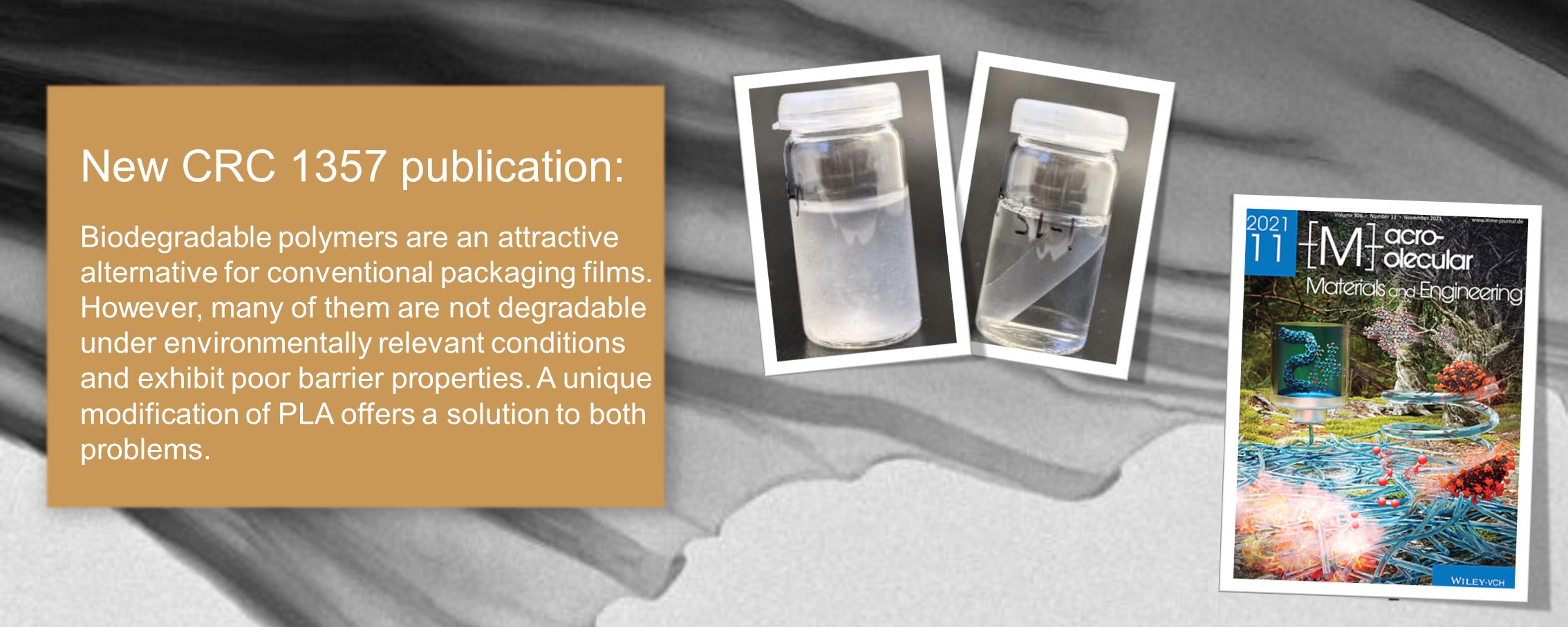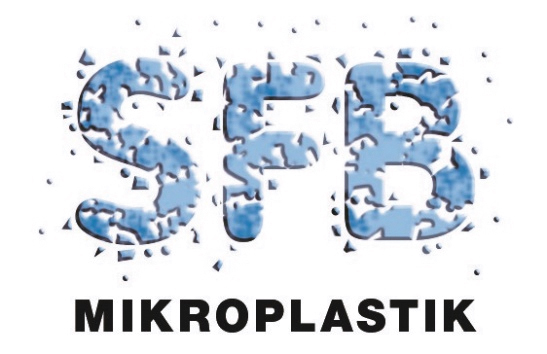News
New CRC 1357 publication: Timmins (2022) - High Barrier Nanocomposite Film with Accelerated Biodegradation by Clay Swelling Induced Fragmentation
07.12.2021

Congratulations to the C02 Team & their co-authors: Renee L. Timmins, Anil Kumar, Maximilian Röhrl, Karel Havlíček, Seema Agarwal, Josef Breu on their new exciting publication in the Special Issue: Sustainable Macromolecular Materials and Engineering:
"High Barrier Nanocomposite Film with Accelerated Biodegradation by Clay Swelling Induced Fragmentation"
DOI: https://doi.org/10.1002/mame.202100727
Abstract: Conventional biodegradable polymers such as poly(lactic acid) (PLA) are an attractive alternative to replace traditional nondegradable food packaging films which plague the environment. However, PLA has shown to not be degradable in some environmentally relevant conditions, including within the freshwater systems. Additionally, PLA suffers from very poor barrier properties, which could result in food spoilage. Compositing with clay has been used to improve barrier properties according to tortuous path theory. Here a synthetic, large aspect ratio Na-Hectorite is used that may be utterly delaminated in an organic solvent and composited with PLA by modification with 18-crown-6 (18C6Hec), yielding a castable, homogeneous nematic suspension. Upon drying, thermodynamics drive the suspension toward segregation into sublayers of PLA and partially restacked 18C6Hec in situ. This unique self-assembled nanostructure combines the best of two worlds: The aspect ratio remains high and results in a 99.3% reduction in oxygen permeability. Additionally, the film shows surprisingly high resistance to swelling at elevated humidity, but once soaked in water, clay swelling is triggered, which fragments the film and drastically increases the surface area by 2500%. Accelerated degradation is observed under controlled enzymatic conditions and in an environmentally relevant wastewater medium during CO2 evolution testing.

